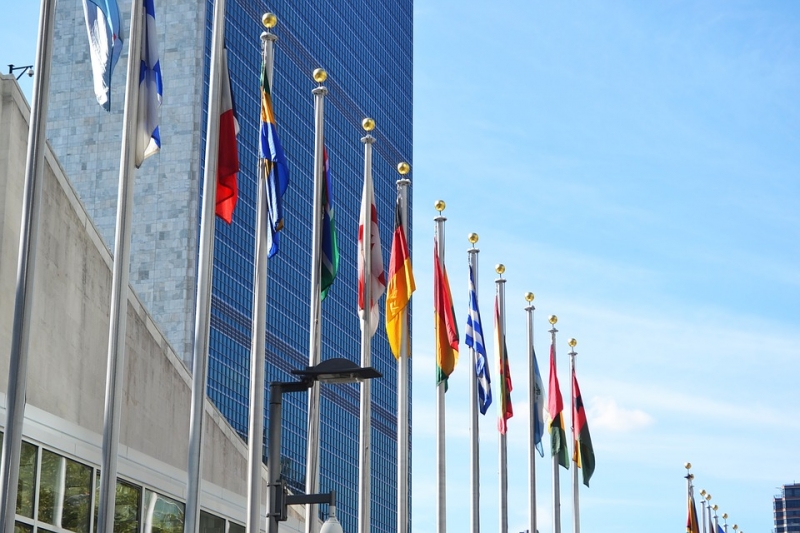In the international system, there are over 3,500 environmental agreements governing thousands of distinct ecosystems across hundreds of different nations. This complex spider-web of treaties, protocols, and commitments often lacks coherence, obscuring the role of environmental law in the international community. Despite efforts to consolidate international environmental governance with the inception of the United Nations Environment Programme (UNEP) in 1972 and the Paris Climate Accords in 2015, barriers to a consolidated system of environmental law still remain. While UNEP has certainly filled an important role in moving toward such a system, it has historically been unable to act as a unifying central authority in the way that U.N. bodies like WHO, FAO and UNESCO have.
In May of 2018, the U.N. General Assembly took a major step toward consolidating this historically diffuse set of laws under a single legal umbrella when it adopted resolution 72/277, colloquially referred to as “Towards a Global Pact for the Environment”. The resolution created an ad hoc open-ended working group tasked with reviewing a report released by the U.N. Secretary General outlining the “gaps” that still exist in international environmental law. The working group hopes to use the findings presented in the report to inform a new set of environmental principles that can govern international environmental problems. This review is the first step in what could result in the codification of these principles under a single legal framework—a unity that has long alluded the international environmental community.
Perhaps, most exciting for those in the environmental law field is that the pact has the potential to be far more than just a symbolic move by the U.N. Rather, a Global Pact could fundamentally restructure international environmental governance by providing guidance and transparency for environmental adjudication in courts, bolstering the importance of human rights in environmental protection, and promoting a greater integration of environmental principles in non-environmental fields. Many scholars hope that the pact’s success will definitively recognize access to a healthy environment as a fundamental human right, in turn creating the impetus for stronger environmental laws and policies, both internationally and nationally.
 Observers of the international environmental community would no doubt recognize the critical need for this potential restructuring. Earlier this year, UN Environment released the first ever global assessment of environmental rule of law. The report, which was developed with ELI, found weak enforcement to be a global trend that is exacerbating environmental threats, despite prolific growth in environmental laws and agencies worldwide over the last four decades. In addition, the lack of coordination in international environmental governance has often resulted in what many view as a political deficit, leading to suboptimal policies and solutions. Absent an effective pact, the environmental law community has experienced a proliferation of international agreements, a phenomenon some refer to as “treaty congestion.” At best, this often means international environmental solutions are inefficient and redundant. At worst, it can mean that these solutions directly conflict with each other. The Convention on International Trade in Endangered Species of Wild Fauna and Flora (CITES) and the International Tropical Timber Agreement (ITTA) clashed over the harvesting of mahogany in Latin America when CITES listed the tree for protection, while simultaneously the ITTA permitted the tree for harvesting. Countries, such as Brazil, who are members of both CITES and ITTA, have little guidance for resolving these environmental conflicts.
Observers of the international environmental community would no doubt recognize the critical need for this potential restructuring. Earlier this year, UN Environment released the first ever global assessment of environmental rule of law. The report, which was developed with ELI, found weak enforcement to be a global trend that is exacerbating environmental threats, despite prolific growth in environmental laws and agencies worldwide over the last four decades. In addition, the lack of coordination in international environmental governance has often resulted in what many view as a political deficit, leading to suboptimal policies and solutions. Absent an effective pact, the environmental law community has experienced a proliferation of international agreements, a phenomenon some refer to as “treaty congestion.” At best, this often means international environmental solutions are inefficient and redundant. At worst, it can mean that these solutions directly conflict with each other. The Convention on International Trade in Endangered Species of Wild Fauna and Flora (CITES) and the International Tropical Timber Agreement (ITTA) clashed over the harvesting of mahogany in Latin America when CITES listed the tree for protection, while simultaneously the ITTA permitted the tree for harvesting. Countries, such as Brazil, who are members of both CITES and ITTA, have little guidance for resolving these environmental conflicts.
However, solving the international community’s environmental governance troubles may not be as simple as creating a Global Pact. Some scholars fear that the Pact as it is currently conceived is faced with a tricky balancing act between avoiding legal governance complexities of mass detail and leaning too heavily on broad environmental principles so as to be devoid of substance. Similarly unclear is how the Pact intends to approach the equitable financing of international environmental solutions between the Global North and South. As such, many questions remain about the Global Pact and its potential impact on international environmental governance. Will the Global Pact need to be codified in hard law to be effective? How will the Pact navigate the complexities of environmental implementation at the international and domestic levels? How will non-state actors be included under the framework of the Global Pact?
ELI and leading experts in the field will be exploring these questions and more in an upcoming webinar on Friday, March 8, from 12:00 pm to 1:30 pm ET.
The webinar will explore the obstacles to and benefits of utilizing the Pact, the gaps in current international environmental law, and the principles that could guide environmental law for years to come.
This event is open and free to the public, but please register by March 6. Event details and RSVP information can be found here.
